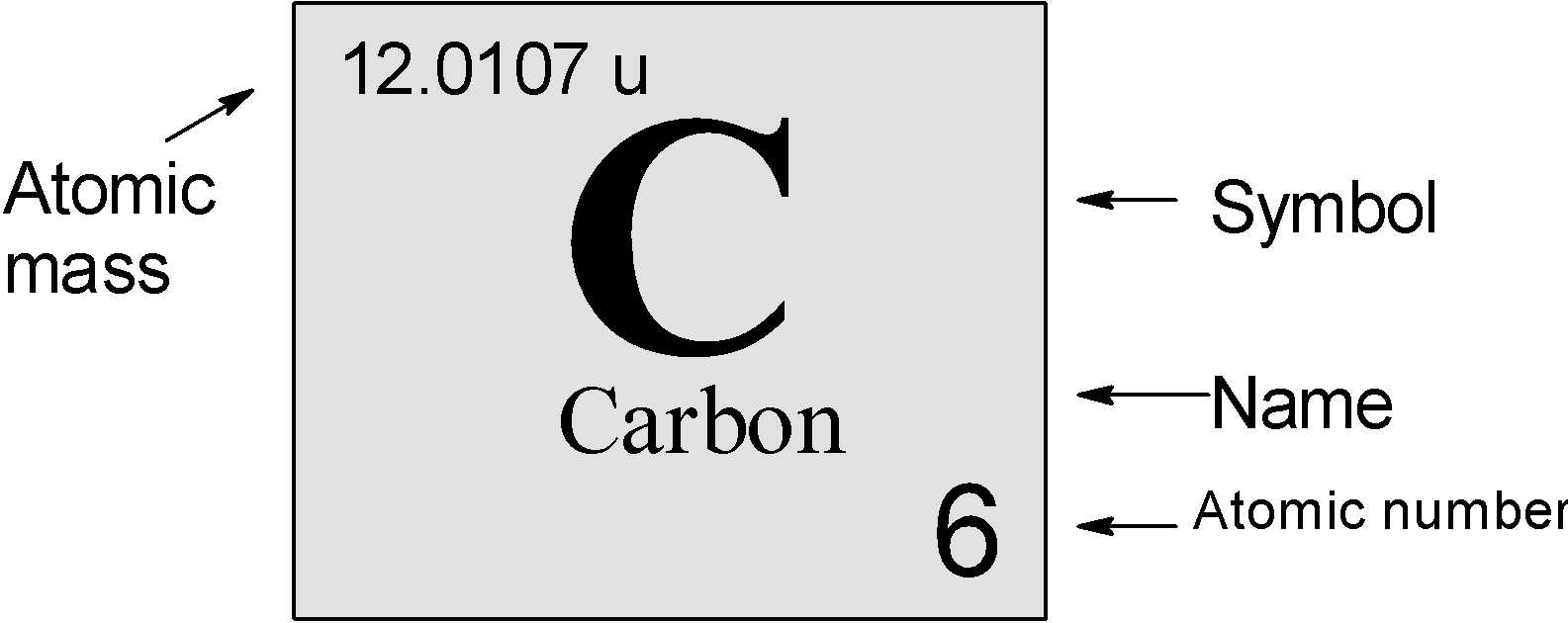
Atomic number of carbon atom is:
A) 1
B) 3
C) 6
D) 8
Answer
577.5k+ views
Hint: The atomic number is equal to the number of protons in the nucleus. In the periodic table, the atomic number increases as we move from left to right and top to bottom. The carbon atom has 6 protons in its nucleus and 6 electrons revolving around the nucleus in an uncharged state.
Complete step by step answer:
The atomic number of an element equals the protons found in the nucleus of an atom. The atomic number of the element is represented by the symbol Z. The atomic number is a unique identity of a chemical element. The Z is equal to the charge number of the nucleus.
$\text{ Atomic number (Z) = Number of proton}$
We know that carbon C is a group 14 element. Each carbon atom has 6 protons and 6 electrons. We know that the atomic number is equal to the number of the protons, therefore the atomic number of carbon is 6.
Carbon plays a crucial role in defining life. Therefore its electronic configuration and its atomic number are of great importance.
Its electronic configuration is as follows
$\text{ 1}{{\text{s}}^{\text{2}}}\text{ 2}{{\text{s}}^{\text{2}}}\text{ 2}{{\text{p}}^{\text{2}}}$
The valence shell of carbon contains the 4 electrons.it forms a covalent bond by sharing its valence electrons.
The elemental representation of carbon is as follows:

It can be also noted in the standard format $\text{ }_{\text{Z}}^{\text{A}}\text{X}$ , where A is the atomic mass and Z is the atomic number. The carbon is represented as, $\text{ }_{\text{6}}^{\text{12}}\text{C}$.
Therefore carbon has an atomic number of 6.
So, the correct answer is “Option C”.
Additional Information:
The atomic mass of an atom of an element is equal to the sum of neutrons and protons. The atomic mass is represented by A. The formula is,
$\text{Atomic mass (A) = Number of Proton(P) + Number of Proton(N)}$
The carbon has 6 protons and 6 neutrons present in the nucleus which stabilizes the nucleus. Therefore the atomic mass of carbon is 12.
Note: Sometimes we refer to the atomic number as the number of electrons present in an atom of an element. This is because in an uncharged or in zero charge state the total positive charge produced by the proton is nullified by the negatively charged electrons revolving around the nucleus. Thus, the atomic number equals the total number of electrons.
Complete step by step answer:
The atomic number of an element equals the protons found in the nucleus of an atom. The atomic number of the element is represented by the symbol Z. The atomic number is a unique identity of a chemical element. The Z is equal to the charge number of the nucleus.
$\text{ Atomic number (Z) = Number of proton}$
We know that carbon C is a group 14 element. Each carbon atom has 6 protons and 6 electrons. We know that the atomic number is equal to the number of the protons, therefore the atomic number of carbon is 6.
Carbon plays a crucial role in defining life. Therefore its electronic configuration and its atomic number are of great importance.
Its electronic configuration is as follows
$\text{ 1}{{\text{s}}^{\text{2}}}\text{ 2}{{\text{s}}^{\text{2}}}\text{ 2}{{\text{p}}^{\text{2}}}$
The valence shell of carbon contains the 4 electrons.it forms a covalent bond by sharing its valence electrons.
The elemental representation of carbon is as follows:

It can be also noted in the standard format $\text{ }_{\text{Z}}^{\text{A}}\text{X}$ , where A is the atomic mass and Z is the atomic number. The carbon is represented as, $\text{ }_{\text{6}}^{\text{12}}\text{C}$.
Therefore carbon has an atomic number of 6.
So, the correct answer is “Option C”.
Additional Information:
The atomic mass of an atom of an element is equal to the sum of neutrons and protons. The atomic mass is represented by A. The formula is,
$\text{Atomic mass (A) = Number of Proton(P) + Number of Proton(N)}$
The carbon has 6 protons and 6 neutrons present in the nucleus which stabilizes the nucleus. Therefore the atomic mass of carbon is 12.
Note: Sometimes we refer to the atomic number as the number of electrons present in an atom of an element. This is because in an uncharged or in zero charge state the total positive charge produced by the proton is nullified by the negatively charged electrons revolving around the nucleus. Thus, the atomic number equals the total number of electrons.
Recently Updated Pages
Why are manures considered better than fertilizers class 11 biology CBSE

Find the coordinates of the midpoint of the line segment class 11 maths CBSE

Distinguish between static friction limiting friction class 11 physics CBSE

The Chairman of the constituent Assembly was A Jawaharlal class 11 social science CBSE

The first National Commission on Labour NCL submitted class 11 social science CBSE

Number of all subshell of n + l 7 is A 4 B 5 C 6 D class 11 chemistry CBSE

Trending doubts
Differentiate between an exothermic and an endothermic class 11 chemistry CBSE

10 examples of friction in our daily life

One Metric ton is equal to kg A 10000 B 1000 C 100 class 11 physics CBSE

Difference Between Prokaryotic Cells and Eukaryotic Cells

State the laws of reflection of light

Explain zero factorial class 11 maths CBSE




